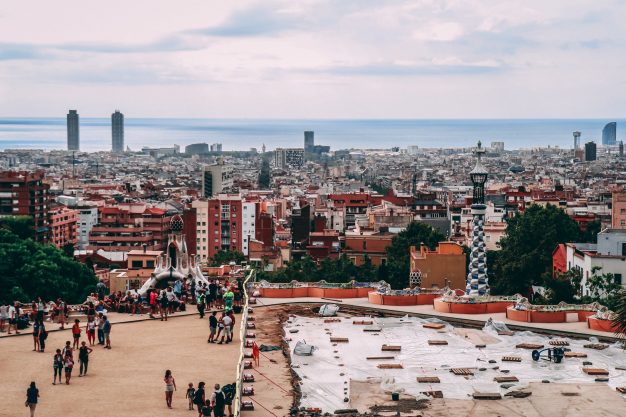
Design as democracy: Barcelona’s ‘Carritos’ encourage a more inclusive urbanism
Community participation has become a checklist item for any major urban development project. But what does community participation actually mean? What would it look like if we flipped the responsibility of engagement from citizens to designers? What if, instead of asking more people to show up at meetings, we asked designers to show up in the community?
For the past few years, a curious experiment in this sort of active engagement has been rolling out across the streets and plazas of Barcelona, Spain.
In 2016, to assist with its Municipal Action Plan, which set the priorities, objectives and actions for the city administration, the Department of Citizen Participation commissioned 10 small carts, or carritos, to deploy in each of the city’s 10 districts to collect proposals. Since then, teams of city staff have been charged with bringing the carritos into the everyday spaces of Barcelona.
Painted bright red and equipped with maps, drawings, handouts and surveys, carritos attract the attention of passersby and prompt conversations about how the city around them. In essence, the city has asked designers and planners to participate in the daily life of communities rather than expecting the other way around.

“Grounded in the Heart of the Community”
A cooperative of urbanists called Raons Públiques introduced the carrito to Barcelona back in 2009. The cooperative itself emerged as a multidisciplinary group of designers, anthropologists, sociologists and educators, whose goal was to challenge the city’s norms of participation and to find more inclusive ways of engaging citizens in the design of public spaces. The carrito, then, was not just a gimmick; it was a deliberately more humble and empowering way of relating with citizens about the places they valued. To one member of Raons Públiques, the carrito was powerful because it generated “a different kind of participation – one that is grounded in the heart of the community.”
But how exactly does the carrito work? The carts are parked usually at the edge of a plaza or alongside a busy pedestrian street, where people will naturally pass. By slightly disrupting the daily rhythms of life, they attract more than just the usual suspects who attend workshops. For traditional public meetings, people have to deliberately show up, and they need to dedicate precious personal time to the effort. On the street, casual encounters can be brief and more intimate.
The result is an entirely different kind of public participation. Community elders stop and tell stories, children muse over drawings or play with models, and people coming from work or going to the store ask about what is going on in their neighborhood, or just talk about the weather. If they’re interested, they may even take a flyer or a survey.
The ability to reach a more representative sample of people affected urban development is compelling enough, but an equally important transformation happens in the minds of the designers and planners themselves. The carrito takes experts out of their comfort zones, away from their desks, where planning can be an activity of abstraction, and into the reality of the street. Here, a new relationship with communities is required, one that is more open to listening, observing and appreciating what is already there. It encourages an attitude of curiosity and places value on local knowledge.

Toward Citizen-Driven Planning
The carrito is not the only way to create active engagement, nor is it intended to replace tried and tested planning processes, but it does open up possibilities for more creative approaches to city making.
For many public projects, participation is now a required component of the design process. As a result, engagement is framed as something tedious that designers are obliged to do, rather than something that enriches the design process with valuable insights and community connections. Public meetings and workshops are not going away, and they still provide important spaces for more formalized presentations and for gathering input. But for designers who really want to listen and observe, these venues alone, however well crafted, will be inadequate.
For Barcelona’s part, the carritos have proven instrumental to the success of the Municipal Action Plan, which has in turn launched dozens of citizen-driven planning initiatives. Because of their obvious utility, carritos have been appropriated for use in several neighborhood plans as well as the redesign of the city’s famous Eixample grid system too, also known as “superblocks.”
The carritos are only a small part of Barcelona’s shift to a more robust participatory framework, which includes better online platforms and more transparency overall. Laia Torras Sagristà, who has worked on citizen participation for the city since 2011, sees these efforts as ways to make engagement more instrumental in the development of design projects. Beyond that, however, the transformation of attitudes can be more challenging. Planners and designers don’t always appreciate local expertise, and often don’t want to give up their control over the process. The carrito can’t ultimately force that change, but it can’t hurt either. If it helps to emphasize the need for multiple ways to engage with citizens, that is a start.
This article was first published on The City Fix.




